What Temperature Is Enzyme Activity the Best
When the temperature decreased to 22 C the enzyme activity decreased. Which of the following best explains what happens when a protein becomes denatured.

Temperature Enzyme Reaction Rates Effects Examples Expii
In this lab you will measure enzyme activity in a solution and measure the effect of five different temperatures.

. Optimum temperature Each enzyme has an optimal temperature and the temperature in the human body is about 37 degrees Celsius which is about equal to the normal body temperature of the human body. You will also be able. Several drops of Amount of iodine.
There are also enzymes that work well at lower and higher temperatures. Using a color key you will be able to determine the speed of the enzyme reaction at these different temperatures. The new hypothesis is derived from the experiment results is that the high temperatures to optimum activate enzymes for maximum reaction but when the temperatures rise beyond optimum the enzymes are denatured and thus the reaction slows down.
Other conditions that effect the rate of an enzyme-catalyzed reaction include pH and temperature. Each enzyme has a temperature at which it works best. Optimum temperature for the enzymatic activity of salivary amylase ranges from 32 C to 37 C.
A scientific study from the Department of Chemistry Tufts University Medford Massachusetts USA. Post that there is a steep fall in enzyme activity. Reactions and are influenced by temperature just the same.
Amylase works best in a pH range of 67 to 76 and so. Effect of Temperature Therefore more time will be taken by an enzyme to digest the starch at lower and higher temperatures. Effects of temperature on the activity of DEPases were determined between 40 C and 80 C in Na 2 HPO 4 NaH 2 PO 4 buffer pH.
The temperature effects on enzyme activity at the conditions with and without inhibition operation and storage were investigated for free esterase and immobilized chicken liver esterase with three methods adsorption adsorption-microcapsule and adsorption-crosslinking used in a calorimetric biosensor. Hypothesis As the reaction temperature of amylase solution and starch solution increase the reaction rate of amylase and starch will increase. The activity of the enzymes is slowed down.
One unit U of enzyme activity was defined as the amount of enzyme that catalyzed the formation of 1 μmol D-allulose in 1 min under the described conditions. People also ask how does temperature affect pepsin. With the rise in the pH the rate of enzyme reaction increases though at pH 8 it reaches the maximum activity.
On the other hand low temperature deactivates enzyme activity thus the reaction. Optimum Temperature Each enzyme has a temperature that it works optimally in which in humans is around 37 degrees Celsius the normal body temperature for humans. Enzymes and its Properties is an interactive app for students to learn about enzyme temperature enzyme activity enzyme properties salivary amylase lock key hypothesis in an easy and engrossing way by visualizing the colorful images.
It is one of the best educational applications which is des. And it just so happens that most of the important bodily enzymes function best at or near 986 degrees Fahrenheit. The temperature-dependence of enzyme activity A Experimental data for alkaline phosphataseThe enzyme was assayed as described by Peterson et al.
Finally it was found that normal or warm temperature is the. Most enzymes operate the best around physiological temperature and pH3 In this lab the enzyme activity of Beano was analyzed under various conditions. The heat reached a point too high for the enzyme causing its decline of activity and furthermore denaturing catalase.
But it doesnt always happen. The temperature at which the enzyme activity is greatest. The data are plotted as rate μMs 1 against temperature K against time during assay sB The result of fitting the experimental.
Determination of temperature and pH on enzyme activity. However some enzymes work well at lower temperatures such as 4 degrees Celsius and some enzymes work very well at higher temperatures. To investigate the effect of temperature 10 37 60.
The optimum temperature means that the temperature at which the enzyme shows the maximum activity. As an example the enzyme amylase breaks down starch to make smaller sugars. Enzymes function best at the temperature that is appropriate for their substrate and product.
Animals in desert climates have enzymes adapted to higher temperatures. The data showed that cold temperatures cause the rennin enzymes to inactivate as the samples that were temperature causes the enzymes to denature as the samples that were 60 o C showed inconsistent degrees of setting. 30C 40C 50C 60C and 70C.
Every enzyme has an optimum temperature. Changing temperature usually radically affects the catalytic performance of enzymes. So in a sense an enzymes ideal temperature is dictated by the coding of that enzyme which does not vary a great deal from person to person.
A slight increase in temperature can increase enzyme activity while a large increase in temperature can cause the enzyme to become denatured. However some enzymes work really well at lower temperatures like 4 degrees Celsius and some work really well in higher temperatures like 95 degrees Celsius. And the data were smoothed as described here in the Experimental section.
For example Arctic animals have enzymes adapted to lower optimal temperatures. When testing the effect of temperature on pepsin enzyme activity the results showed that pepsin worked best at the temperature 30 C. As the surface area of the active sites to the substrate increases there is an increase in the chemical reaction.
This is because the 80C temperature destroyed the molecular bonds and reshaped the active site disallowing the substrate to attachfit itself into it. This can be different from one enzyme to the next but enzymes within the human body tend to have optimum temperatures around 37C. The experiment was conducted with several temperatures.
Higher enzyme concentrations a maximum rate will be reached unless more substrate is added. The optimum temperature for most enzymes is about 986 degrees Fahrenheit 37 degrees Celsius. Celsius on enzyme catalase activity in potato using 2 of hydrogen peroxide H202 as the substrate measuring the height cm of oxygen gas bubbles and calculating the volume of oxygen bubbles produced cm3.
Effect of Temperature on Enzyme Catalase Activity in potato Aim.

Temperature Enzyme Reaction Rates Effects Examples Expii
Effect Of Temperature On Enzyme Action Brilliant Biology Student
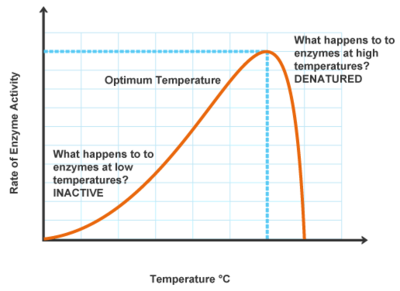
Biochemistry Enzymes Temperature Pathwayz
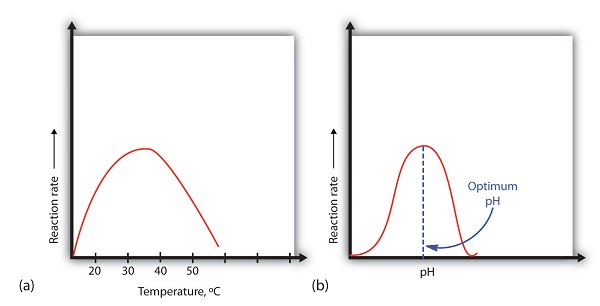
18 7 Enzyme Activity Chemistry Libretexts
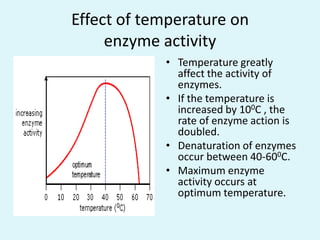
Biochemical Principles Of Enzyme Action

Temperature Enzyme Reaction Rates Effects Examples Expii

Lesson Explainer Factors Affecting Enzyme Action Nagwa
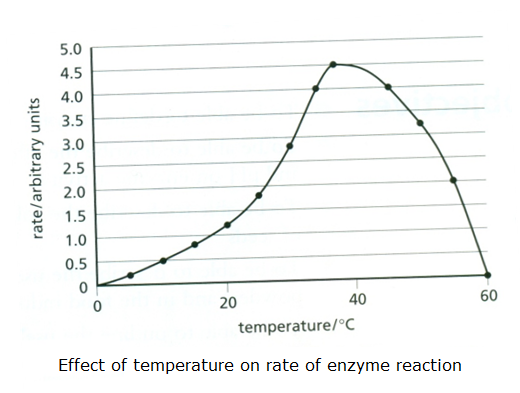
Enzymes And Reactions Biology Notes For Igcse 2014

Effect Of Temperature On Enzyme Activity Enzymes Activity Enzymes Graphing
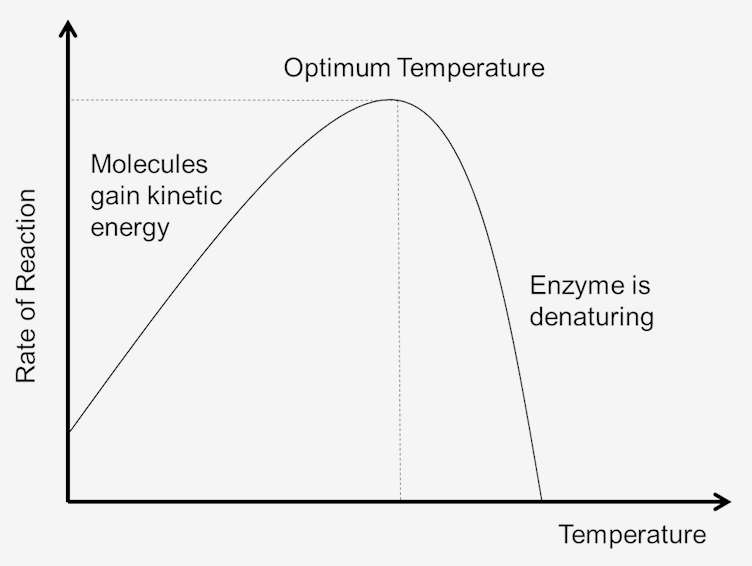
Effect Of Temperature On Enzymatic Reaction Creative Enzymes
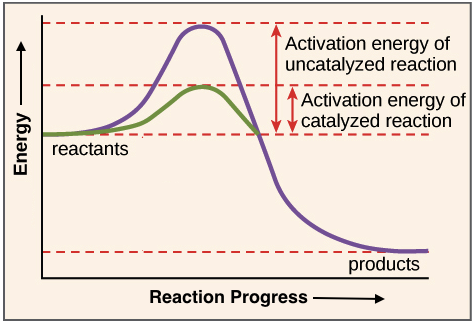
Enzymes Review Article Khan Academy




Comments
Post a Comment